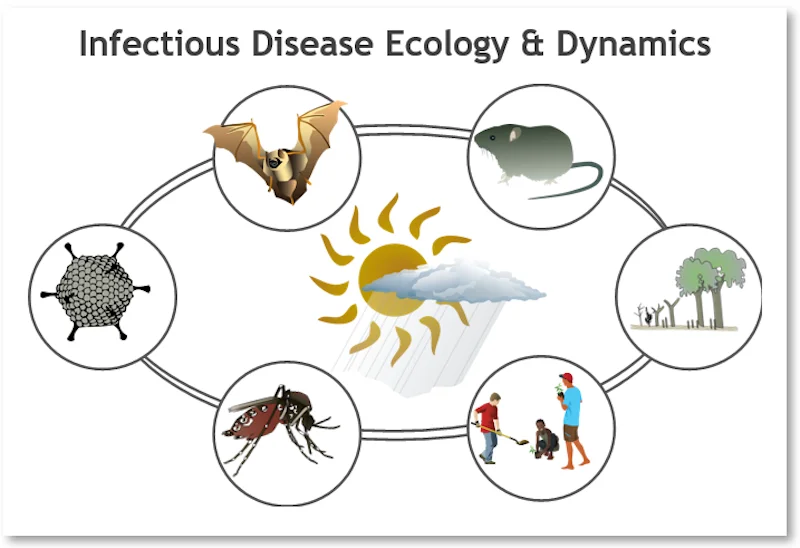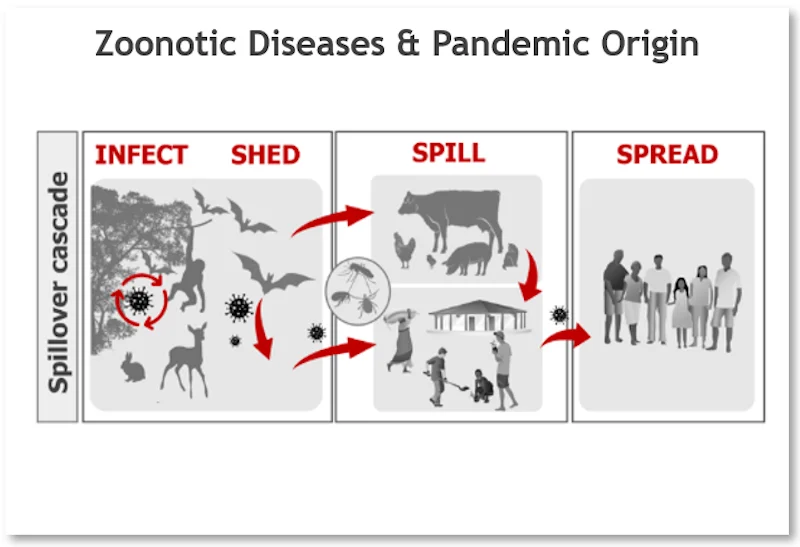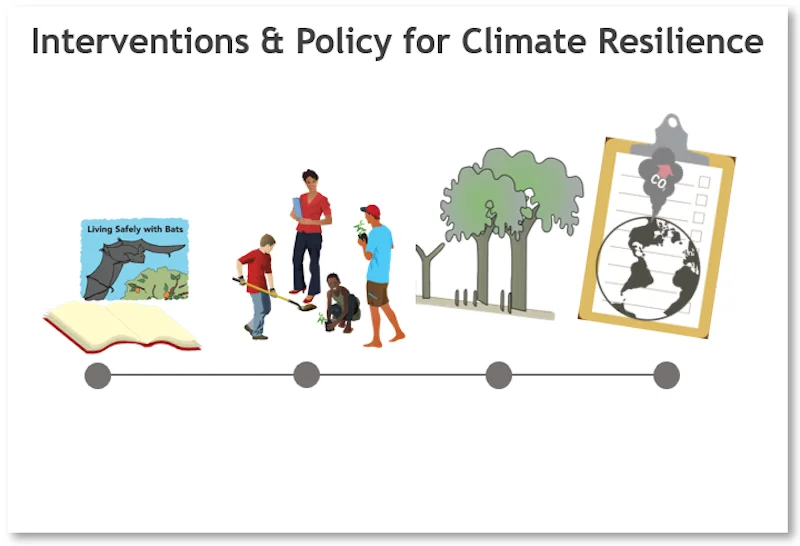


Climate change manifests itself in the alteration of biogeophysical factors, ultimately influencing the lifecycle of diverse living organisms and the ecosystems within which they exist. Among them are disease vectors such as mosquitos and ticks and wildlife animals that maintain and transmit zoonotic infections. The contemporary literature has documented over 1000 pathways through which climate change exerts its influence on the spatial range, frequency, and severity of outbreaks of various infectious diseases of concern, including vector-borne (e.g., dengue, Zika, malaria), water-borne (diphtheria, cholera), and zoonotic diseases and the emergence of novel infections. Our lab applies state-of-the-art scientific methods to explore macroecological and epidemiological patterns and dynamics of climate-sensitive infectious diseases. We seek to advance the current understanding of mechanisms and processes through which climate change operates and affects the dynamics and ecology of a wide range of infectious diseases.

Infectious diseases from animals and transmittable to the human population present a global health challenge. The frequency of zoonoses and pandemics is increasing in human populations. Recognized drivers include land use, wildlife handling, deforestation, urbanization, and increasing population density. Effects of climate change on zoonotic diseases, however, remain understudied. Climate change is an environmental stressor influencing infectious disease ecology cross-scale. The ecology and dynamics of zoonotic infectious diseases are highly intricate due to the various agents involved in the transmission chain. These include wildlife reservoir hosts, recipient hosts, and disease agents mixing at the animal-human-environment interface. Establishing linkages between climatic variability and zoonoses demands creativity, innovation, and transdisciplinarity in the scientific undertaking. In collaboration with interdisciplinary research teams, our lab applies advanced science to generate and analyze the data to develop climate-based indicators depicting changes in the risk of zoonoses.

The ecology and epidemiology of infectious diseases are highly multifactorial and dynamic at different temporal and spatial scales. Studying these processes and building evidence and tools for decision-making and adaptation requires a sophisticated methodology and rigorous scientific practices. Our lab specializes in applying and developing mathematical and statistical models, including compartmental and agent-based dynamic transmission models and machine learning algorithms. These methods are valuable tools for exploring and approximating infectious diseases' dynamics, emergence, and range expansion as responses to environmental and climate changes. The recent advance in machine learning has opened new possibilities for estimating complex macroecological patterns and key driving parameters from available data with high accuracy that had not been previously possible. We further work on combining process-based models with machine learning which enables new ways for discovery and explanation of processes and mechanisms giving rise to observed macroecological patterns.

Technological development of sensors, automated smart vector traps, animal tracking devices, imaging, mobile phone geo-positioning, social media, citizen science, and response molecular biology field tools allow the generation of novel data types viable and valuable for research and surveillance of infectious diseases. Advances and innovations in computer vision, artificial intelligence, deep learning and neural networks provide opportunities to analyse and integrate novel data streams and enhance traditional infectious diseases surveillance practices. Our lab takes advantage of the recent innovations in data generation and analytic methodologies to augment climate-sensitive infectious disease intelligence, risk space prediction and early outbreak detection. Particularly, we apply pattern recognition techniques and natural language processing to detect cross-scale infectious disease spatial and temporal patterns and design indicators relevant for risk monitoring, early warning, and response actions.

The acceleration of climate change and the multifactorial nature of its impact emphasizes the need for a more proactive and holistic approach to adaptation, mitigation and response policy actions and interventions. These include nature-based solutions, early warning systems, adaptation and mitigation policies and changed behavior. Our lab integrates methods from different disciplines into a coherent and practical logic of intervention science, with statistical methods from epidemiology and computer science, scenario modelling and simulation, qualitative methods from ethnography, creative methods from design research, and causal methods from medicine and economics. We implement this transdisciplinary approach to synthesize viable knowledge and evidence that are applicable and usable in facilitating decision-making and developing mitigation and adaptation strategies aiming to build climate change resilience.
